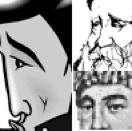01/29/2024
Levi Strauss & Co. announced that it would be eliminating up to 15% of their corporate jobs in an attempt to save money at a time of greatly declining sales. At the same time, the company, which has 10 years left on its naming rights deal for Levi’s Stadium (site of the San Francisco 49ers victory over the Detroit Lions yesterday, placing them in the Super Bowl), announced that they have extended that contract to maintain the stadium name until 2043. Levi Strauss immigrated to New York from Buttenheim in Bavaria in 1847. He worked in his family’s dry goods business, and in 1854 he moved to San Francisco, where he opened the west coast division of the company. In the 1870s, Levi Strauss & Co. began manufacturing the denim jeans that went on to become their primary product, first for workers such as lumberjacks and railroad employees, and eventually as fashion items, with Levi’s jeans now being sold in 110 countries, with annual revenue of more than 4 billion dollars. Which of the following is true about Levi Strauss and Levi’s jeans?
Levi Strauss 1 is in the public domain, via Wikimedia Commons
A. Strauss came up with the idea for denim pants with rivets based on the apron his uncle, a butcher, used in their hometown in Bavaria. The apron included rivets which attached the waist and neck ties to the main denim material of the apron.
B. The company’s iconic product is Levi’s 501 jeans, first sold 150 years ago. Strauss gave them that name based on the gematria, or numerical value, of the Hebrew word אֹשֶׁר, osher, which means happiness.
C. Strauss did not actually create Levi’s jeans. He just paid for the patent that was granted for the design of the pants.
D. Levi Strauss died in 1902 and was buried in a Jewish cemetery in Colma, just south of San Francisco. His coffin was custom made, covered in denim and sealed with Levi Strauss & Co. rivets.
E. The company has produced denim yarmulkes with their iconic rivet at the top.
✡ ✡ ✡ ✡ ✡ ✡ ✡ ✡ ✡





